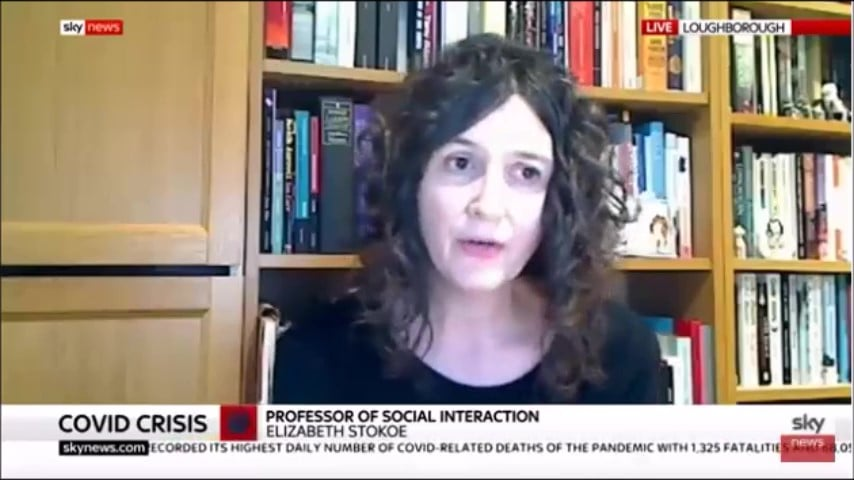
Professor @LSE_PBS | Academic Director of Impact @LSEnews | Conversation Analyst #EMCA | HonFBPsS | @IndependentSage Behaviour Group | she/her | own views ➡🦋
How to get URL link on X (Twitter) App


 2/8
2/8
 As @CathNoakes writes, 'Scores on the Doors' is an example of such a scheme. 2/8
As @CathNoakes writes, 'Scores on the Doors' is an example of such a scheme. 2/8https://twitter.com/CathNoakes/status/1536185364838219780

 Part 2, in which Johnson produces incomplete responses, cut off and abandoned sentences, rushed-through turns, deviations, and stated intentions - but does not provide examples of what Elsie "should cut back on".
Part 2, in which Johnson produces incomplete responses, cut off and abandoned sentences, rushed-through turns, deviations, and stated intentions - but does not provide examples of what Elsie "should cut back on". 

 2. We searched on @LexisNexisUK for the first use, first use in association with Covid-19, and frequency of use, of twelve variations of ‘living with it’ and ‘learning to live with it’, up to the start of 2022.
2. We searched on @LexisNexisUK for the first use, first use in association with Covid-19, and frequency of use, of twelve variations of ‘living with it’ and ‘learning to live with it’, up to the start of 2022.

 The thread is informed by research in conversation analysis #EMCA
The thread is informed by research in conversation analysis #EMCA




 2. The proposed scheme brings together two familiar visual systems: i) the international energy labelling system and ii) icons.
2. The proposed scheme brings together two familiar visual systems: i) the international energy labelling system and ii) icons. 

 2. Meanwhile, beyond campus, the government has
2. Meanwhile, beyond campus, the government has

 2. The timeline covers four main areas: hand and respiratory hygiene, face coverings, physical distancing, and self-isolation...
2. The timeline covers four main areas: hand and respiratory hygiene, face coverings, physical distancing, and self-isolation... 

https://twitter.com/IanCookson72/status/1417417233056387092
 2. There is a great deal of conversation analytic and other research on media / news / political interviews – too much for a thread – including on the thousands of Newsnight interviews.
2. There is a great deal of conversation analytic and other research on media / news / political interviews – too much for a thread – including on the thousands of Newsnight interviews. 



 2. What actually counts as rapport building – in terms of words and phrases and 'tone of voice' – is "amorphous” and “nebulous”, says G.B. Rubin (2016) in her thesis on crisis #negotiation
2. What actually counts as rapport building – in terms of words and phrases and 'tone of voice' – is "amorphous” and “nebulous”, says G.B. Rubin (2016) in her thesis on crisis #negotiation

 2. We might take it for granted that, when 'standardized', questions will be the same whether spoken or written. The examples in the thread will show they're not.
2. We might take it for granted that, when 'standardized', questions will be the same whether spoken or written. The examples in the thread will show they're not. 
 2. If a person threatening violence can hear you on the phone, using ‘small talk’ - in this case, saying "y'all right" at precisely the place where it would routinely appear in an ordinary conversation - will help you sound like you’re having an ordinary conversation.
2. If a person threatening violence can hear you on the phone, using ‘small talk’ - in this case, saying "y'all right" at precisely the place where it would routinely appear in an ordinary conversation - will help you sound like you’re having an ordinary conversation. 

 2. Google "open and closed questions” and you’ll find loads of articles and (often written or hypothetical) examples about them - tweet 1 is just one of many.
2. Google "open and closed questions” and you’ll find loads of articles and (often written or hypothetical) examples about them - tweet 1 is just one of many.

 2. "How are you" is often deemed a 'pointless' or 'filler' question, to which the socially acceptable answer might be a lie ("fine, how are you?").
2. "How are you" is often deemed a 'pointless' or 'filler' question, to which the socially acceptable answer might be a lie ("fine, how are you?").
 2. On Friday night, to prepare for the interview, I duly looked at @DHSCgovuk's campaign.
2. On Friday night, to prepare for the interview, I duly looked at @DHSCgovuk's campaign. 

 2. It is through language that #COVID19 laws, regulations, rules, and guidance are written - which must be understood, interpreted, and acted upon by people. Precise messaging is easier to understand and act upon.
2. It is through language that #COVID19 laws, regulations, rules, and guidance are written - which must be understood, interpreted, and acted upon by people. Precise messaging is easier to understand and act upon.

 2. #IndependentSAGE agrees with SAGE that, in Autumn in HE, “significant outbreaks are likely" that "could amplify local & national transmission"; that "this requires national oversight”, & that “asymptomatic transmission may make these harder to detect”.
2. #IndependentSAGE agrees with SAGE that, in Autumn in HE, “significant outbreaks are likely" that "could amplify local & national transmission"; that "this requires national oversight”, & that “asymptomatic transmission may make these harder to detect”.https://twitter.com/IndependentSage/status/1304398680355745792

